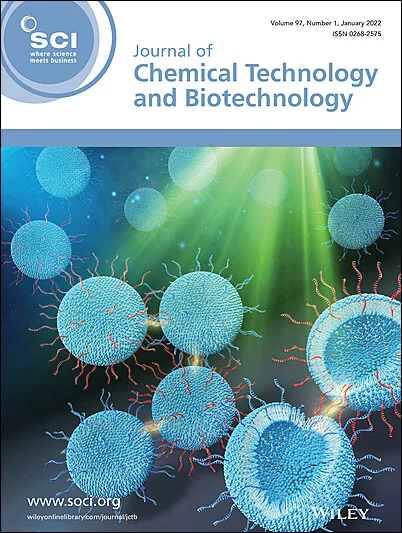Degradation of 2,4-dinitrotoluene by iron sulfide/manganese sulfide–biochar composites in the presence of persulfate and hydrogen peroxide
Abstract
BACKGROUND
Iron sulfide/manganese sulfide (FeS/MnS)–biochar composites were synthesized and their effectiveness at removing 2,4-dinitrotoluene (DNT) from water was evaluated. It was hypothesized that FeS/MnS–biochar composites have large surface areas for DNT sorption and reduction, and the capacity to promote persulfate- and hydrogen peroxide (H2O2)-mediated DNT oxidation.
RESULTS
Compared to removal by biochar alone, the removal of DNT by 2 and 50wt.% FeS–biochar composites (1 g dosage) was enhanced via sorption and reduction by 37% and 48%, respectively. As the biochar increased the pH, however, the FeS–biochar composite was not as effective as FeS alone at removing DNT, indicating that an acidic medium may be necessary for the reductive removal of DNT by the FeS–biochar composite. In contrast, MnS and MnS–biochar composite were not as effective at reducing DNT as FeS and the FeS–biochar composite. FeS–biochar composites demonstrated good catalytic efficacy and enhanced persulfate- and H2O2-mediated DNT oxidation. The 50 wt% FeS–biochar composite (5 g dosage) removed 93% and 100% of DNT in the presence of persulfate/H2O2 (3 mmol L−1), respectively, under the given conditions. Both the Fe2+ in the FeS and the carbon in the FeS–biochar composites contributed to the catalytic enhancement of the DNT oxidation. Radical quenching tests and electron paramagnetic resonance spectroscopic analysis revealed that sulfate (SO4−∙) and hydroxyl (OH∙) radicals are dominant radical species to account for the enhancement of DNT oxidation. In contrast, neither Mn2+ nor S2− in MnS and MnS–biochar composite worked as a catalyst to enhance the DNT oxidation by persulfate/H2O2.
CONCLUSION
The results of the present study indicate that FeS and FeS–biochar composites are promising as sorbents, reductants, and catalysts for the remediation of environmental DNT contamination. © 2025 Society of Chemical Industry (SCI).




 求助内容:
求助内容: 应助结果提醒方式:
应助结果提醒方式:


